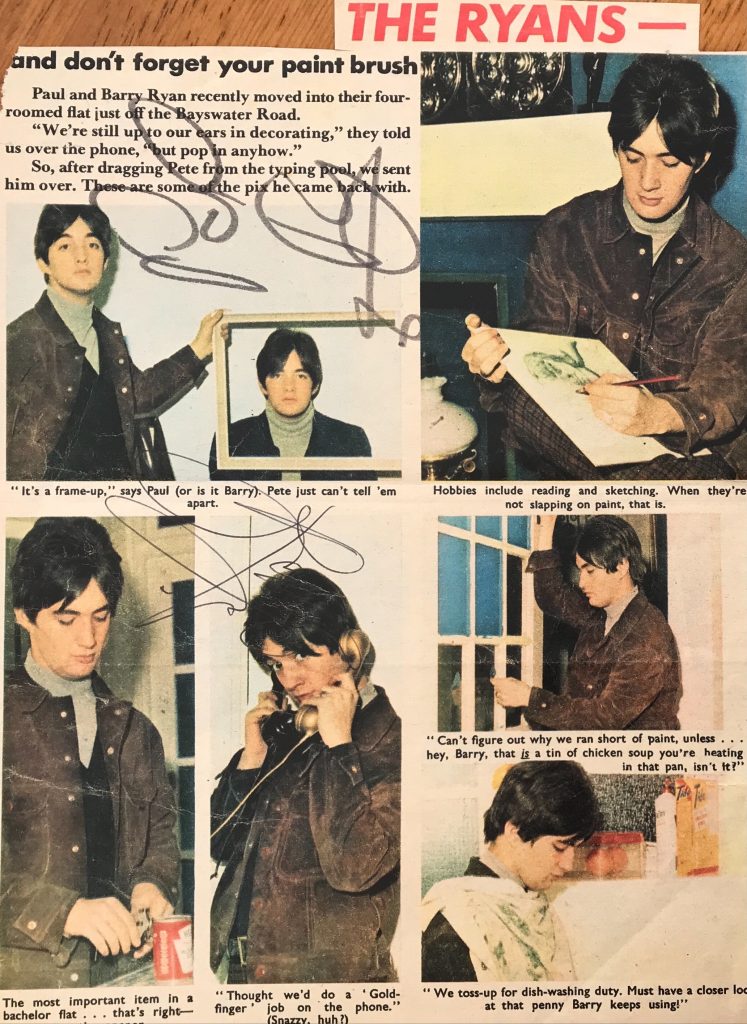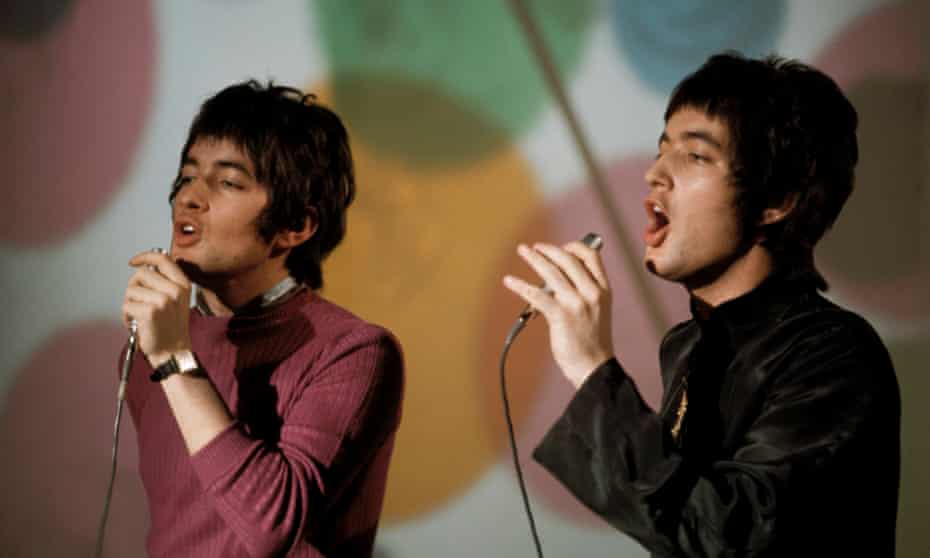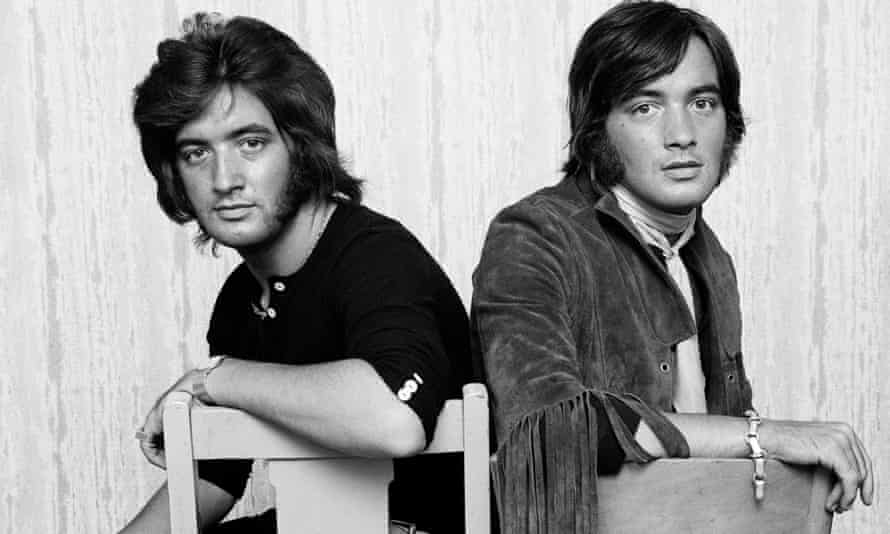
Barry Ryan obituary
Singer, composer and photographer who shot to fame in the 1960s as part of the teen duo Paul and Barry Ryan

Suzie MackenzieThu 7 Oct 2021 18.04 BST
With his identical twin, Paul – at 16, they were not much older than their fans – in 1965 he formed the duo Paul and Barry Ryan. The pair belted out catchy, dramatic love ballads, songs that drifted around the UK Top 20, bobbing tantalisingly close to the big time until, in 1968, they had a hit single with Eloise, and with it the perils and pleasures of stardom.
By 1968 Paul had retired from the stage, leaving Barry to front the song solo. Paul had written the track for his brother’s deep, soulful voice; in later life, Barry would tour with Eloise as a tribute to Paul, who died from lung cancer in 1992.Advertisement
Eloise is mysterious. Its collision of styles – Puccini meets gospel meets Broadway musical – was part of what was being manufactured as “new” in pop. Not everybody warmed to it, with one critic describing the song as “sounding like a man being strangled by a cat”. The orchestral textures and structural intricacies were clearly influenced by Jimmy Webb’s MacArthur Park; and its “popera” owes much to Phil Spector’s Wagnerian overlays on tracks such as Walking in the Rain. Hyper-melodramatic content with soaring male vocals were in vogue. Yet none of this accounts for the enduring allure of Eloise.
No one can agree whether it is a sugary madeleine of a song about a man’s idealisation of an unobtainable woman, or a melodrama of dark obsession and savage yearning. But everyone does agree that the vocal style and the power of Barry’s voice carries the song. “Singing from the heart,” one critic noted. Barry performed the recording in two takes, with a high degree of professionalism in the production. Jimmy Page and John Paul Jones, on their way to founding Led Zeppelin, were two of the session musicians.

Years later, in 1986, when the punk rock band the Damned made their cover of Eloise, Peter Barnes, their music publisher, remembered: “Dave Vanian adored the song and mirrored the vocal performance as a tribute.” Barry, in the audience, was heard to say, “I like their version more than my own.”
In 1969, Barry was injured in a studio fire in Munich. Although he was not physically scarred it had a psychological impact, which may have increased his dependency on alcohol. In 1986 both brothers entered rehab. Barry never drank again.Advertisement
Barry’s life had its share of Dionysian excess – parties at his flat in Eaton Place were renowned; Jimi Hendrix spent his first night in London there. But he never forgot his roots. Born in Leeds, he was the son of Marion (nee Ryan) and Fred Sapherson. Fred left when the boys were two, and Barry and Paul were brought up by “Nana”, their adored grandmother, watched over by three loving “sisters” – technically their aunts, but who were roughly the same age as the twins – while Marion, who had had her boys as a teenager, pursued her singing career. She became a successful performer, rising to prominence in the 1950s with the band leader Ray Ellington, and was a regular on the television musical quiz show Spot the Tune.
By the time the twins were 11, Marion was earning enough to buy Nana a big house and to pay for boarding school. Barry passed the 11-plus to the local grammar but Paul did not, so the pair went instead to board at the fee-paying Fulneck school in Pudsey, outside Leeds. At 16 Marion sent them to a kibbutz in Israel, where they lasted two weeks and were later discovered singing in a Tel Aviv nightclub. Now they knew what they wanted. Through Marion’s husband-to-be, the impresario Harold Davison, Paul and Barry signed with Decca.

By the mid-70s the twins had disappeared from the music scene and Barry turned to his lifelong passion, photography. His friendship with the German photojournalist Christa Peters exerted a strong influence and his photographic sensibility developed into an unusual fusion of self-expression and documentation. It surprised no one but him that when he submitted six pictures to the National Portrait Gallery, all were bought.
In 1976 Barry married Miriam, daughter of Sultan Ibrahim of Johor. They divorced amicably in 1980. Barry had a talent for not falling out with people – and that stood him in good stead when, after Paul’s death, he published a memorial book of 80 portraits, donating profits to Cancer Research. Everyone he contacted agreed to pose, including Sting, Paul McCartney, Björk and Stephen Hawking. Advertisement
He also photographed Margaret Thatcher, who had left office by this time. Mid shoot, noticing the hem of her curtains was adrift, she fetched a needle and thread. Without turning around when he moved his camera, she scolded him: “Don’t even think about it, Mr Ryan.” Thatcher subsequently helped Barry secure a portrait with Ronald Reagan.
Sadly Barry did not live to see the release of Edgar Wright’s film Last Night in Soho, partly set in the 60s and with a soundtrack of the period. Wright was not born when Eloise was first a hit but he knew the version by the Damned. “When I heard the original by Barry Ryan I fell even more in love with the song. I’d always wanted to use it in a film.” The song so perfectly matched the tone of his movie that Wright called his main character Eloise.
Barry is survived by his wife, Christine (nee Goodliff), whom he married in 1995, their children, Jack and Sophia, his stepson, David, and his niece, Paul’s daughter, Paige.
Barry Ryan, singer, composer and photographer, born 25 October 1948; died 28 September 2021
Paul Ryan (24 October 1948 – 29 November 1992) was an English singer, songwriter and record producer.
Born in Leeds, West Riding of Yorkshire, England, Paul and his twin brother Barry were the sons of singer Marion Ryan, and had some success as a singing duo during the 1960s, known simply as “Paul & Barry Ryan”. However, the stress of public attention caused Paul to retreat into the background, while Barry went solo. Paul Ryan wrote Barry’s 1968 hit, “Eloise”, the 1971 hit “Who Put the Lights Out?” for Dana and another of his songs, “I Will Drink the Wine”, was a UK hit single for Frank Sinatra.
In the 1970s, Ryan relocated to the United States and later left the music industry. In 1976, he released an album, Scorpio Rising. After returning to the UK in 1985, he earned his living from operating a chain of hairdressing salons.
The gothic punk band the Damned reached number 3 in the UK Singles Chart in 1986, with their version of “Eloise”.
He died of lung cancer in 1992 in London at the age of 44

